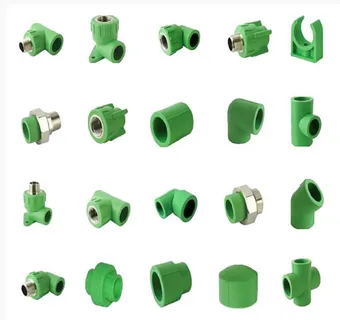Understanding PPR Pipes and Their Applications
PPR (Polypropylene Random Copolymer) pipes are gaining widespread popularity in various industries due to their exceptional durability, corrosion resistance, and thermal stability. These pipes are primarily used in hot and cold water distribution systems, making them an ideal choice for residential, commercial, and industrial applications. Unlike traditional materials such as PVC or metal, PPR pipes offer a longer lifespan and lower maintenance costs. Additionally, their lightweight nature makes them easy to handle and install, which further enhances their appeal. As the demand for sustainable and efficient plumbing solutions grows, PPR pipes and fittings are increasingly seen as a viable alternative.
Key Features of PPR Pipes and Fittings
One of the most significant advantages of PPR pipes is their high resistance to temperature fluctuations and chemical corrosion. They can withstand temperatures of up to 95°C (203°F) and are suitable for a wide range of fluids, including potable water and various chemicals. PPR fittings, which include elbows, tees, and couplings, are designed to provide secure and leak-free connections. Additionally, PPR systems do not require any additional sealing materials, as they can be welded together, creating a homogenous joint that maintains the integrity of the system. This unique feature enhances the reliability and efficiency of PPR piping systems, making them a preferred choice among engineers and contractors.
Leading PPR Pipe and Fitting Manufacturers
Several manufacturers stand out in the PPR pipe and fitting industry, known for their quality products and innovative solutions. Companies such as Wavin, FIRAT, and Aquatherm are renowned for their extensive product lines and commitment to quality. Wavin, a leading brand in the plastics industry, offers a wide range of PPR products designed for various applications, ensuring that their customers have access to the latest technology and standards. FIRAT is another prominent manufacturer, known for its advanced production techniques and high-performance PPR systems that cater to both residential and industrial needs. Lastly, Aquatherm is widely recognized for its sustainable manufacturing processes and environmentally friendly products, setting a benchmark in the industry.
The Future of PPR Pipe and Fitting Manufacturing
As the construction and plumbing industries evolve, the future of PPR pipe and fitting manufacturing looks promising. With growing concerns over environmental sustainability, manufacturers are increasingly focusing on producing eco-friendly products. Advances in technology are leading to more efficient production processes and improved product performance. Moreover, as global standards for plumbing systems become more stringent, manufacturers must adapt by incorporating innovative solutions to meet these requirements. The ongoing research and development in materials science will likely lead to the introduction of even more advanced PPR solutions, solidifying the position of PPR pipes and fittings in the market for years to come.ppr pipe and fitting manufacturers
